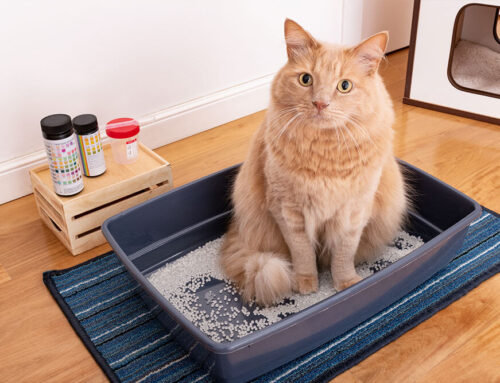Pet owners share a special bond with their animal companions, and over the years, they become attuned to their pet’s quirks, habits, and personality. You may be quite adept at distinguishing your dog’s playful tail wiggle from the wag that means they’re nervous and the particular purr your cat makes when she’s feeling extra affectionate. Despite this deep connection, it can be challenging to recognize when your pet is not feeling their best. Unlike humans, animals often instinctively mask their pain or discomfort so as not to appear vulnerable to predators in the wild, which can make it difficult for even the most attentive pet owner to discern when something’s amiss. Subtle shifts in your pet’s appearance, behavior, and habit can signal it’s time for a veterinary visit. Our team at Animal Clinic of Council Bluffs explains how to identify the warning signs to determine when your pet should get veterinary care.
#1: Eating and drinking changes in pets
Understanding your pet’s eating and drinking habits and recognizing when they change can help you keep them healthy. Sudden changes can be caused by a variety of factors, including underlying health conditions.
- Diabetes — Diabetes is a lack of insulin normally secreted by the pancreas or a resistance to insulin’s effects. Without insulin, pets can’t use energy from the food they eat, and that energy (i.e., glucose) builds up in their bloodstream. The most common and recognizable signs of diabetes include weight loss, increased thirst and urination, and a ravenous appetite.
- Kidney disease — Poorly functioning kidneys are unable to filter out toxins and metabolic wastes effectively, so the body’s excess water is used to push out waste products, causing dehydration, which leads to increased thirst.
- Gastrointestinal disease — A pet who isn’t feeling well because of acute or chronic gastrointestinal (GI) problems may stop eating, drool, vomit, hunch their back to guard their belly, or have diarrhea. Causes include foreign body ingestion, infection, dietary indiscretion, inflammatory conditions, food allergy, or GI tract tumors.
- Cushing’s disease — Cushing’s disease causes an overproduction of cortisol and natural steroids, resulting in a pet’s increased thirst and urination.
- Thyroid disease — Cats who develop an overactive thyroid (i.e., hyperthyroidism) lose weight, become hungrier, and may drink or urinate more frequently. Dogs with an underactive thyroid (i.e., hypothyroidism) may lose their appetite but gain weight and lack energy.
- Dental disease — Periodontal problems are pets’ most commonly diagnosed issues, and the pain caused by swollen gums, diseased teeth, or oral masses leads to decreased food and water intake.
#2: Red, irritated eyes in pets
Redness, discharge, and squinting can be caused by irritation from an allergy, something that got into your pet’s eye, or something more serious, such as conjunctivitis, corneal ulcers, dry eye, glaucoma, and other eye problems. A veterinary examination is the only way to determine the cause and severity of your pet’s ophthalmic condition.
#3: Breathing difficulties in pets
Any respiratory difficulty, such as wheezing, excessive panting, or labored breathing, can signify serious conditions, such as heart and respiratory disease, and warrant a veterinary visit. Respiratory problems can escalate rapidly, and signs that indicate your pet is experiencing distress, including open-mouthed breathing, increased respiratory rate and effort, exacerbated abdominal movement while breathing, and holding their neck low and outstretched, should be treated as an emergency.
#4: Persistent vomiting or diarrhea in pets
While an isolated incident might not be alarming, repeated vomiting or diarrhea can lead to dehydration and indicate issues like gastrointestinal disease, infections, or ingestion of toxic substances. If your pet has been vomiting or having diarrhea repeatedly during a 24-hour period, cannot keep down food or water, develops blood in their vomit or stool, or shows other illness signs, seek veterinary care.
#5: Lameness and lethargy in pets

All pets have their off days, but a normally energetic pet who seems lethargic for more than a day or two is cause for concern. Fatigue can be a sign of countless health issues, from heart disease to respiratory problems. Limping or reluctance to jump or climb can indicate musculoskeletal issues, injuries, or conditions like arthritis. While many pets experience joint pain as they age, it’s essential to ensure they are not suffering unnecessarily.
While your pet may not communicate in words, subtle changes in their appearance, behavior, and habits can provide important clues about their health. If you are concerned about changes in your furry companion’s appearance or behavior or want to schedule their wellness exam, contact our Animal Clinic of Council Bluffs team.






Leave A Comment